
International Journal of Environmental Science and Technology
Scope & Guideline
Elevating the discourse on environmental sustainability.
Introduction
Aims and Scopes
- Water Treatment Technologies:
Research in this area emphasizes the development and optimization of various treatments for wastewater and contaminated water bodies, including advanced oxidation processes, electrocoagulation, and biosorption techniques. - Waste Management and Recycling:
This scope includes the investigation of sustainable practices for solid waste management, recycling technologies, and the valorization of waste materials for environmental benefits. - Environmental Pollution and Remediation:
Studies focus on the characterization of pollutants, their effects on ecosystems, and the development of bioremediation strategies using microbial and plant-based approaches. - Climate Change and Environmental Impact Assessments:
Research often involves modeling the impacts of climate change on various environmental parameters, including air quality, water resources, and biodiversity, along with assessments of mitigation strategies. - Renewable Energy and Sustainable Practices:
The journal promotes studies on renewable energy technologies, their integration into existing systems, and their potential to reduce environmental footprints. - Ecosystem Services and Biodiversity:
This area explores the relationship between environmental health, ecosystem services, and biodiversity, focusing on conservation strategies and ecological risk assessments. - Technological Innovations in Environmental Science:
Research involving the application of novel materials, nanotechnology, and other advanced techniques for environmental monitoring, remediation, and resource recovery.
Trending and Emerging
- Microbial and Phytoremediation Techniques:
There is an increasing interest in utilizing diverse microbial communities and plant species for the bioremediation of contaminated environments, reflecting a shift towards sustainable and eco-friendly solutions. - Nanotechnology in Environmental Applications:
Research involving the use of nanomaterials for pollutant removal and environmental monitoring is on the rise, showcasing advancements in material science and their applications in environmental technology. - Climate Change Mitigation Strategies:
Studies focusing on adaptive practices, resilience building, and the impacts of climate change on ecosystems are becoming more prevalent, indicating a heightened awareness of global climate issues. - Circular Economy Practices:
Research examining the principles of circular economy, waste-to-resource strategies, and sustainable product life cycles is gaining traction, reflecting an increasing emphasis on resource efficiency. - Artificial Intelligence and Machine Learning Applications:
The integration of AI and machine learning techniques for environmental data analysis, predictive modeling, and decision-making processes is emerging as a significant trend in recent publications. - Sustainable Agricultural Practices:
Research on the intersection of agriculture and environmental science, particularly in relation to sustainable practices that enhance soil health and reduce chemical inputs, is increasingly prominent. - Environmental Health and Safety Assessments:
There is a growing focus on the health impacts of environmental pollutants, especially in light of recent global health crises, leading to more studies on exposure risks and mitigation measures.
Declining or Waning
- Traditional Wastewater Treatment Methods:
As newer and more efficient technologies emerge, traditional methods of wastewater treatment are increasingly being overshadowed by innovative approaches, leading to fewer publications in this area. - Single-Species Bioremediation Studies:
Research focusing solely on the bioremediation potential of single microbial species has declined, with a shift towards more complex, multi-species interactions that better reflect natural ecosystems. - Static Environmental Impact Assessments:
Traditional static assessments are being replaced by dynamic and integrated approaches that take into account long-term impacts and interactions among various environmental components. - Conventional Energy Sources:
Research related to fossil fuels and conventional energy sources is decreasing as the focus shifts towards renewable energy solutions and sustainability practices.
Similar Journals
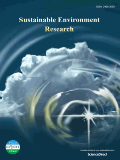
Sustainable Environment Research
Uniting researchers for a sustainable tomorrow.Sustainable Environment Research, an esteemed journal published by BMC, serves as a pivotal platform for disseminating innovative research in the fields of Environmental Engineering, Pollution, and Renewable Energy. Established in 2016 as an Open Access journal, it facilitates the widespread sharing of knowledge and advancements across the globe, reflecting its commitment to enhancing environmental sustainability. With an impressive Q1 ranking in multiple categories, including Water Science and Technology and Pollution, the journal is recognized for its significant impact, currently holding a rank of 31st in Environmental Science - Water Science and Technology. The journal actively invites researchers, professionals, and students to contribute to crucial discussions around sustainable practices and technologies, thus addressing worldwide environmental challenges. Based in Taiwan but accessible internationally, Sustainable Environment Research provides a valuable resource for those dedicated to advancing the science of sustainability.
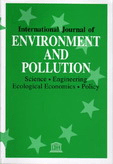
INTERNATIONAL JOURNAL OF ENVIRONMENT AND POLLUTION
Unveiling Critical Perspectives on Environmental ChallengesInternational Journal of Environment and Pollution is a pivotal publication in the field of environmental science, dedicated to advancing knowledge concerning pollution and its multifaceted impacts on ecosystems and human health. Published by InderScience Enterprises Ltd, this journal, which has been in circulation since 1991, serves as a vital platform for researchers, professionals, and students interested in the management, monitoring, policy, and law associated with environmental issues. With an ISSN of 0957-4352 and E-ISSN 1741-5101, it offers a critical perspective on pollution challenges, emphasizing Waste Management and Disposal. Although placed in the Q4 quartile of its categories, it remains an important resource for understanding the complexities of environmental impact, contributing to policy formulation and ecological research. The journal does not offer Open Access, but it can be accessed through various academic libraries and institutions that value comprehensive studies in environmental management. Engage with the latest findings and discussions that address pressing environmental concerns today!

Green Energy & Environment
Driving Change Through Cutting-edge Environmental Research.Green Energy & Environment, published by KEAI PUBLISHING LTD, stands as a pioneering journal dedicated to the dynamic fields of renewable energy, sustainability, and environmental science. With its ISSN 2096-2797 and E-ISSN 2468-0257, this Q1 journal holds a noteworthy presence in academic discourse, reflecting its high-quality contributions within these critical areas of research. Launched in 2016, it has consistently embraced an Open Access model, facilitating unhindered access to research findings and fostering collaboration across global communities. Based in Beijing, China, this journal is dedicated to disseminating innovative insights that are essential for addressing urgent global challenges related to energy and environmental sustainability. Researchers, professionals, and students alike benefit from a platform that not only showcases pioneering research but also encourages interdisciplinary dialogue and knowledge exchange in the pursuit of a sustainable future.

Euro-Mediterranean Journal for Environmental Integration
Driving Change Through Interdisciplinary Environmental ResearchThe Euro-Mediterranean Journal for Environmental Integration, published by SPRINGER HEIDELBERG, serves as a pivotal platform for interdisciplinary research in the realm of environmental science, particularly focused on the unique ecological and socio-economic context of the Euro-Mediterranean region. With its ISSN 2365-6433 and E-ISSN 2365-7448, this journal aims to foster a collaborative approach to environmental challenges, integrating insights from various fields such as ecology, geography, and sustainable development. Since its inception in 2016, it has made significant strides, achieving a Q3 ranking in Environmental Science and maintaining a notable position within the Scopus rankings, sitting at #102 out of 233 in the general environmental science category, which reflects its growing influence in academic discourse. The journal is committed to open dialogue among researchers, professionals, and students aimed at advancing knowledge and promoting innovative solutions to pressing environmental issues. Access to its comprehensive articles and findings will be key to contributing to a more sustainable future.
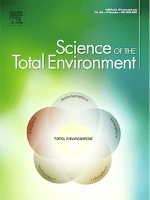
Science of The Total Environment
Transforming Environmental Challenges into OpportunitiesScience of The Total Environment, an esteemed journal published by Elsevier, holds a significant position in the field of environmental science, encompassing critical areas such as Environmental Chemistry, Environmental Engineering, Pollution, and Waste Management and Disposal. With an impressive impact factor and ranked in the Q1 quartile across its categories for 2023, the journal is recognized for its high-quality research output and contribution to environmental sustainability. Operating from its base in the Netherlands, the journal has been a valuable resource since its inception in 1972, welcoming innovative studies that address complex environmental challenges. Its notable rankings—such as Rank #9 in both Environmental Sciences and Pollution—underscore its relevance and influence in the academic community. Although the journal currently does not provide an open access option, the robust findings and discussions presented within its pages continue to foster a deeper understanding of environmental issues. Science of The Total Environment is an essential platform for researchers, professionals, and students dedicated to advancing knowledge and solutions in the rapidly evolving field of environmental science.
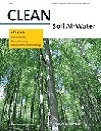
CLEAN-Soil Air Water
Transforming Research into Action for a Healthier PlanetCLEAN-Soil Air Water, an esteemed journal published by Wiley, serves as a vital platform for disseminating research in the fields of environmental chemistry, pollution, and water science and technology. Operating under an Open Access model, it embraces the principles of knowledge sharing, making significant research findings readily accessible to a global audience. With an ISSN of 1863-0650 and an E-ISSN of 1863-0669, the journal has demonstrated its importance in the academic community, reflected in its Scopus rankings within the top quartiles of its categories. Established in 2007 and continuing through to 2024, CLEAN-Soil Air Water offers researchers, professionals, and students an opportunity to explore innovative studies that address pressing environmental challenges, facilitating an exchange of novel ideas and techniques essential for sustainable development. With a publication footprint in Germany and a growing international reputation, this journal is an invaluable resource for those dedicated to advancing the science and practices of environmental stewardship.
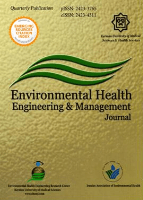
Environmental Health Engineering and Management Journal
Pioneering Research for a Sustainable FutureEnvironmental Health Engineering and Management Journal is a premier platform dedicated to the dissemination of research findings in the essential field of environmental health. Published by Kerman University of Medical Sciences in Iran, this Open Access journal has been a beacon of scientific inquiry since its inception in 2014. With an ISSN of 2423-3765 and E-ISSN 2423-4311, it facilitates broad accessibility to cutting-edge research that addresses the complex interactions between environmental factors and human health. With a notable categorization in the Q3 quartile for Environmental Science and Public Health, alongside Q4 in Chemical Health and Safety, the journal underscores its commitment to quality and relevance. Currently ranked #132 out of 233 in Environmental Science within Scopus, it serves as a crucial resource for researchers and practitioners striving to tackle contemporary environmental challenges. The journal's scope includes innovative methodologies, environmental risk assessment, and sustainable health practices, positioning it as an indispensable reference for those invested in improving public health outcomes through environmental engineering and management.

GLOBAL JOURNAL OF ENVIRONMENTAL SCIENCE AND MANAGEMENT-GJESM
Empowering interdisciplinary solutions for a sustainable future.Global Journal of Environmental Science and Management (GJESM), published under the distinguished leadership of Professor J. Nouri, is an esteemed academic platform dedicated to advancing the interdisciplinary discourse surrounding environmental science and management. With an ISSN of 2383-3572 and an E-ISSN of 2383-3866, GJESM has established itself as a prominent Open Access journal since 2014, allowing for unrestricted sharing of knowledge and research findings. Based in Iran, this journal caters to a diverse global audience, featuring contributions that span various critical domains including agricultural and biological sciences, environmental engineering, pollution management, and social sciences, evidenced by its impressive 2023 Q1 and Q2 quartile rankings across multiple categories. The journal’s Scopus rankings demonstrate a robust standing in the academic landscape, with exciting placements that underscore its relevance in key fields. By bridging the gap between scientific inquiry and practical application, GJESM serves as a vital resource for researchers, practitioners, and students seeking to understand and address the pressing environmental challenges faced by our planet today.

EQA-International Journal of Environmental Quality
Connecting researchers to drive impactful change.EQA-International Journal of Environmental Quality, published by the University of Bologna, Department of Agricultural Sciences, is a premier open-access journal dedicated to the multidisciplinary exploration of environmental quality issues. Established in 2009, it aims to foster a greater understanding of the intricate interactions between human activities and environmental health. With a focus on innovative research, the journal contributes to the advancement of knowledge across diverse fields, making it an essential resource for researchers, professionals, and students engaged in environmental science and sustainability. The journal operates with an emphasis on accessibility, ensuring that critical findings reach a global audience without barriers. With an impressive Scopus rank of 88 out of 171, EQA stands as a significant platform for disseminating impactful research that informs policy and promotes environmental stewardship.

Asian Journal of Water Environment and Pollution
Pioneering strategies for a pollution-free future.Asian Journal of Water Environment and Pollution is a leading academic journal published by IOS PRESS, dedicated to advancing the field of water science and technology, as well as pollution management. With its ISSN 0972-9860 and E-ISSN 1875-8568, this journal serves as a pivotal platform for researchers, professionals, and academics alike who are keen to explore innovative solutions and interdisciplinary approaches toward water-related challenges and environmental issues. Although currently positioned in the Q4 category for both pollution and water science & technology, the journal aims to foster impactful research and discussions that can enhance the understanding and treatment of water pollution. The Asian Journal of Water Environment and Pollution not only plays a crucial role in disseminating knowledge but also encourages the sharing of findings from unique geographic perspectives, particularly from Asia. As the field evolves, this journal is poised to become a vital resource for those looking to contribute to sustainable water management practices and pollution reduction strategies.